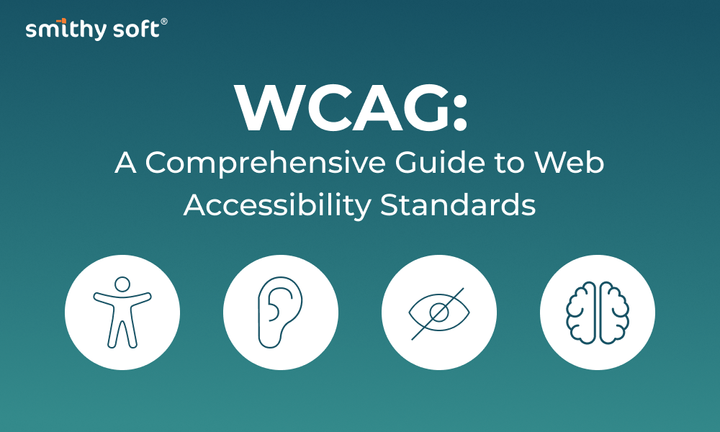How to prepare the perfect Pitch Deck: 10 noteworthy tips

You can find hundreds of examples and templates for creating a Pitch Deck online. But you need a unique presentation that will set you apart from others and not dissolve like a drop of water in the "sea" of startups. We will tell you how to create it..
Technically, you can prepare a Pitch Deck yourself (using ready-made templates from the Internet) or allocate money from the budget to pay for the work of professionals in this matter. But in any case, you must pay attention to the "golden" rules for an effective presentation. Otherwise, it will not work, and you will get nothing but wasted time and money..
Tip 1
Choose the appropriate type of presentation you need. To do this, decide: for whom you are preparing it (investors, competition jury, or your clients), what is the purpose of your presentation (attract attention, make an appointment, sign a contract, or sell), how much time you will have for its presentation?
If this is a pitch for investors, then your goal is to attract their attention and convince them that your business ideas are unique and capable of providing a breakthrough in a certain field, and therefore deserve financial support.
If it's a concept pitch, you'll need a very brief presentation with key points about your product, service, or business. Very concise, short, clear, and explicit.
If your task is to sell your product to a potential client, then you need to prepare a sales pitch. Here, completely different aspects are important, like how you will solve the client's problem, why this solution is valuable and profitable for him, and how you are better than your competitors.
If it is a presentation about your new product, you need a bright presentation that will ensure your recognition on the market and allow you to stand out from the competition. This type of pitch will be more voluminous and in-depth and will contain analysis, comparisons, and stories.
In general, your finished presentation should answer 3 main questions:
- Who are you, and what problem do you solve?
- How do you differ from others; what is your uniqueness?
- Why should someone invest in you? (What is the benefit for the investor/client?)
Tip 2
If you want to be remembered, your pitch deck must contain much more than a business case. In fact, it's about storytelling: instead of presenting boring facts, pack your idea in an engaging and compelling story that will evoke an emotional response from investors/clients: surprise, satisfaction, fond memories, new experiences, breaking the mold, etc. Only then will your presentation be remembered, and as a result, the startup will have more chances for funding.
Tip 3
Make slides for the viewer, not for yourself. The reason for all mistakes in presentations is the same: a person makes slides not for the audience but for themselves. When there is too much text on the slide, the picture does not correspond to the content, or everything is wrong with the style, it means that no one had the other person's perception in mind. The creator of the presentation thought only about unloading all their thoughts, putting them in one place that turned out to be the presentation.
Therefore, it must be short and simple. Time is at a premium these days, so keep in mind that your pitch to investors should generally be no longer than 15-20 minutes and be easy and fun to follow. For an investor, less information is better than too much. Your presentation slides should be simple, convey high-level ideas, and leave room for questions.
By the way, a few years ago, the DocSend platform and Tom Eisenmann, a professor at Harvard Business School, studied more than 200 presentations from companies in the early stages (seed capital), which were sent to investors through this platform. And it turned out that investors spend an average of 3 minutes and 44 seconds watching a presentation for the first time! Therefore, if you do not present your idea in person but send it by e-mail, be sure to consider this point. Try to make it interesting from the beginning.
Tip 4
At the stage of the first visual perception, not so much numbers are vital but the design and organization of information. Colors, font size, and the visual part of the presentation are crucial. Use large fonts and limit the number of words on each slide.
Here are some general guidelines for font size:
- usually, a font size of 36-44 points is used for headings;
- the optimal font size for the main text on the slides is 24-32 points;
- for explanations or notes (secondary information), you can use 18-20 point font.
You may need to make the font size larger or smaller depending on your specific circumstances. For example, if your audience is a significant distance from the screen, you may need to use a larger font size. The presentation must be readable by the entire audience, regardless of where they sit.
Regarding the color:
- for best readability, use contrasting colors for text and background. For example, dark text on a light background or vice versa;
- try to limit yourself to 2-3 colors so that the presentation looks organized and professional;
- different colors evoke different emotions. For example, blue is often associated with reliability and peace, red with energy and passion, and green with nature and health. Choose colors that reflect the emotions you want to evoke in your audience;
- use bright, contrasting colors for the pivotal information so it stands out;
- please note that some color combinations may be difficult for certain categories of people to distinguish. Tools like ColorBrewer can help select color palettes that are comfortable for all users;
- many free online tools such as Coolors or Adobe Color can help you choose harmonious color schemes for your presentation;
- don't be afraid to experiment with colors. You might be surprised how different color combinations can change the mood and impact of your presentation.
Tip 5
Less text, more images. Here are some facts in favor of this from scientific studies:
- The human brain processes images thousands of times faster than text. Accordingly, visual information can be transmitted and assimilated much faster.
- People remember about 10% of the read text after 3 days. However, if the same text is accompanied by an image, people can remember up to 65% of the information.
- Colorful images increase readability by 80%: Color can grab the reader's attention and interest, forcing them to stop and read your content.
- Using charts and graphs can increase the persuasiveness of a presentation by 43%.
- 65% of people consider themselves to be "visual type" and learn information better when it is presented in the form of images.
Tip 6
Your presentation should show the contrast between the problem and the solution. Clearly define the problem and present its solution: if your startup does not solve some global problem, you will have to "raise" it for a very long time. Ideally, when giving your presentation, try to tell an emotional story that outlines the problem. The more you can present the issue as real and threatening as possible, the more relevant and necessary your solution will look. Again: don't forget about visual design – show pain points and solutions with emotional illustrations, color graphs, and charts.
Tip 7
Only true information. Never underestimate investors! Do not manipulate data, facts, or figures. Don't make big claims like "We're the only company on the market that can do this." Chances are, you're not, and you'll lose credibility right away if you say that. If you provide numbers and statistics, be sure to indicate (or comment on) the source – where and when you got it.
Tip 8
Investors care about the numbers and how they will return the money invested in you with a profit. So your presentation should include a slide with a business model - a plan of action that defines how your company makes money and will make money in the future. Show investors exactly what financing you need and explain in detail why. Such a slide will create confidence that you know what you are doing and that you are ready to collaborate openly.
Also, demonstrate the financial growth prospects of your company in the next three to five years. Make a prediction based on your company's business model and current performance. Understandably, the information will change and be adjusted. However, investors want to see your rough development plan and understand that you have a perspective.
Tip 9
You must be passionate about your idea. If you don't believe in it, no one will believe you. You have to live your idea, and "burn with it" – this way you can ignite the light of curiosity in investors.
Tip 10
Don't interrupt the presentation mid-sentence – give a clear call to action at the end. The final slide of the presentation is the most essential because it leaves the last impression, so it should not be a boring summary of the previous slides but be a call to action: buy, finance, make an appointment, etc. The closing slide is your last chance to make an impact on your audience, so it's important to make the most of it.
One more thing
This now well-known phrase was successfully used by Steve Jobs, the founder of Apple, during presentations of new products. Usually, Jobs used it at the end of the presentation, as if he had already finished – but then said "one more thing" before the big announcement. It was an effective technique that created tension and interest. Some of Apple's most important announcements were made after the phrase "one more thing," including the first announcement of the iPhone in 2007. Since then, the phrase has become a symbol of Apple's innovation and ability to surprise its users.
Surprise is a highly powerful tool. By showing something unexpected or impressive at a moment when the audience is about to leave, you make an unexpected move that will be 100 percent memorable. And this is already the first step to success.


